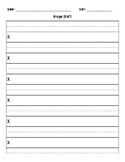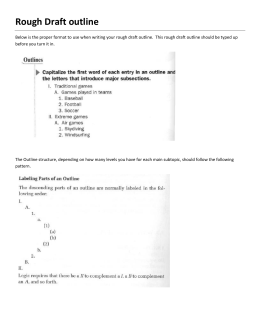

When drafting, a major part of the process is allowing others to revise the work. Relationship between drafting and revising Thanks to the computer, the process of drafting which includes creating numerous drafts, can save the writer time instead of having to physically rewrite the entirety of their drafts. By typing on a computer, it allows the writer to fix the minor mistakes the word processor points and revise the printed copy, it also allows the writer to make global revisions (Becker). In order to benefit from both, it is possible to type drafts on a computer and then print it to make physical revisions.

In comparison to when students create physical, handwritten drafts, they have to constantly reread/ revisit their essay, making more corrections based on ideas. When using word processors, it causes students to only correct minor grammar mistakes the computer points out and miss global mistakes. This dedication influenced global revisions, stated in Draft and revision using word processing by undergraduate student writers. Before word processing, when students created a new draft, it was an investment of their time dedicated to completely rewriting the entirety of their essay. Computer softwares that have word processing makes it easier to fix local, grammar and spelling errors.Īlthough, drafting on a computer does not signify better drafts. Unlike with pen and paper, computers make it easier to compose new drafts (Dave). With technology, most writing is done on computers. As Brandie Bohney in Fail Forward!states, Mistakes are a “success as long as you learn from it”. Mistakes are necessary and it does not mean their writing is poor but it means they are finding ways to make their writing better. In a bad draft, the writer can reflect on the problems and grow from the mistakes. The more the writer drafts, it allows them to see what works and doesn't work for their writing. Through failure in ugly drafts, it allows experimentation without penalty (Bohney). In drafting, students cannot be scared of failure.

pausing to make adjustments to spelling, word-choice, and syntax.organizing their thinking in relation to text produced so far.Elbow reasoned that if a writer "learns to maximize the interaction" among their "ideas or points of view, can produce new ones that didn’t seem available." Įmpirical studies of writers at work indicate that writers can be doing any or all of the following during phases of drafting:
#ROUGH DRAFT PAPER SERIES#
As he puts it, “riting is a way to end up thinking something you couldn’t have started out thinking.” According to Elbow, the best way to accomplish this is a series of drafts which come together to produce an emerging “center of gravity” that then translates into the main focus on the work-a holistic process, in other words, rather than the linear process envisioned by Strunk and White and early writing process theory. In Writing Without Teachers, a more recent take on the role of draft documents, Peter Elbow characterizes a draft less as a first attempt at a predetermined final point and more as an attempt at exploring and where a final version might end up. In a book that became popular in the 1950s, The Elements of Style, Strunk and White characterize a first draft as a less-edited version of the final draft with the purpose of "foresee.the shape of what is to come and pursue that shape". Skills take time to grow, if students start at a young age it can make them a strong writers once their education levels are higher. It helps them build up skills to grow into developing more skills. Young students are taught this way, according to much research because it helps students make it easier for them to write something. It may take a couple of drafts, but even though it may be difficult to start, it generally helps improve better than the other draft. Typically one should be used to writing multiple drafts until finally having their paper finalized. We write in so many different scenarios, but as writers, we don't realize how impactful it is to our process of writing.
#ROUGH DRAFT PAPER TRIAL#
At the phrasal level, these versions may last less than a second, as writers compose and then delete trial sentences as fully developed attempts that have reached the end of a stage of usefulness, draft documents may last for perpetuity as saved "versions" or as paper files in archives.īackground of Draft Writing and Some Effectsĭraft Writing, we are used to the annoying step we continuously have to do when we have a big paper, we have to revise, we plan our thoughts. Drafting happens at any stage of the writing process as writers generate trial versions of the text they're developing. In the context of written composition, drafting refers to any process of generating preliminary versions of a written work. A draft of Franklin Delano Roosevelt's Infamy Speech, including the President's handwritten annotations.


 0 kommentar(er)
0 kommentar(er)
